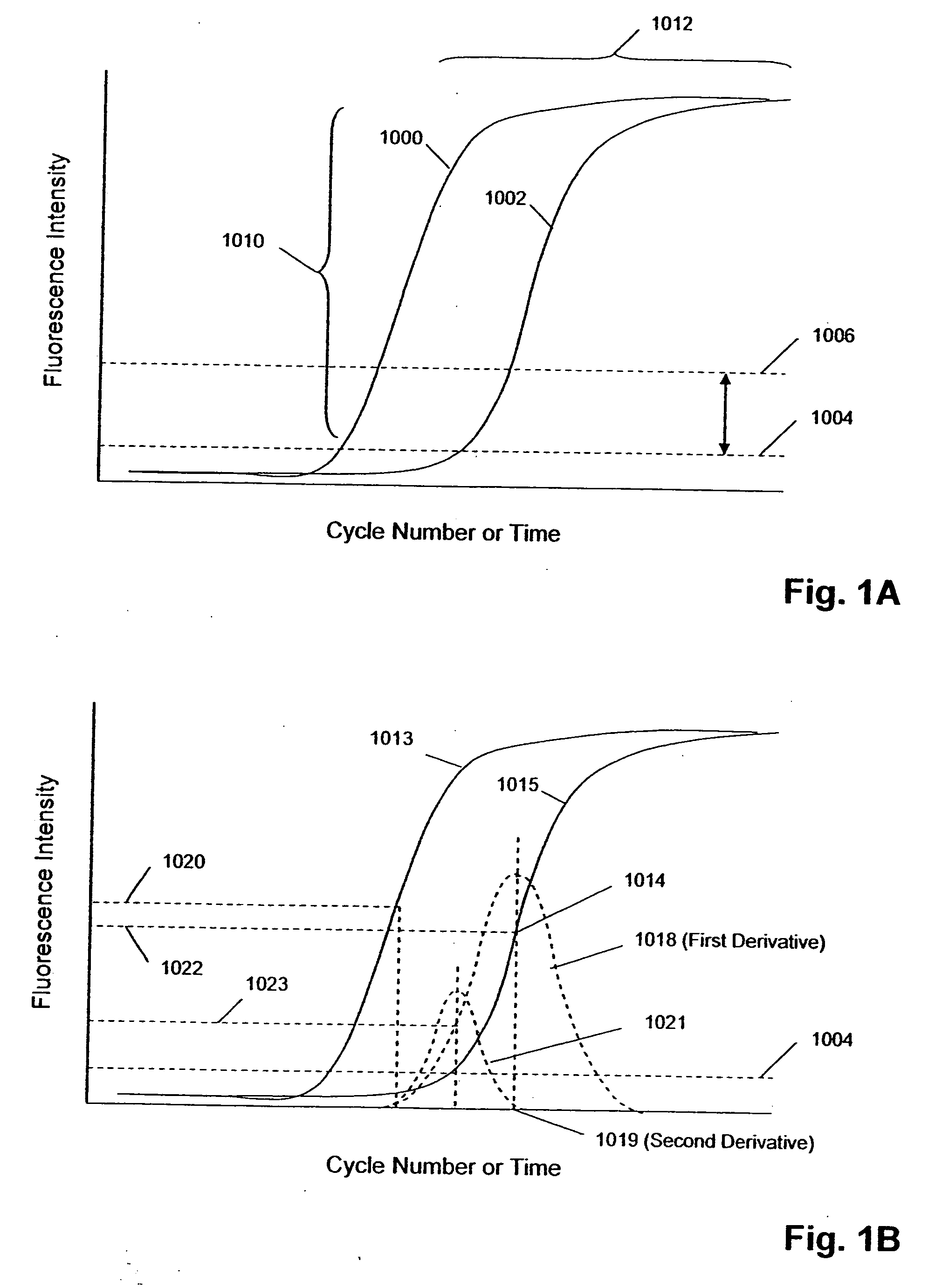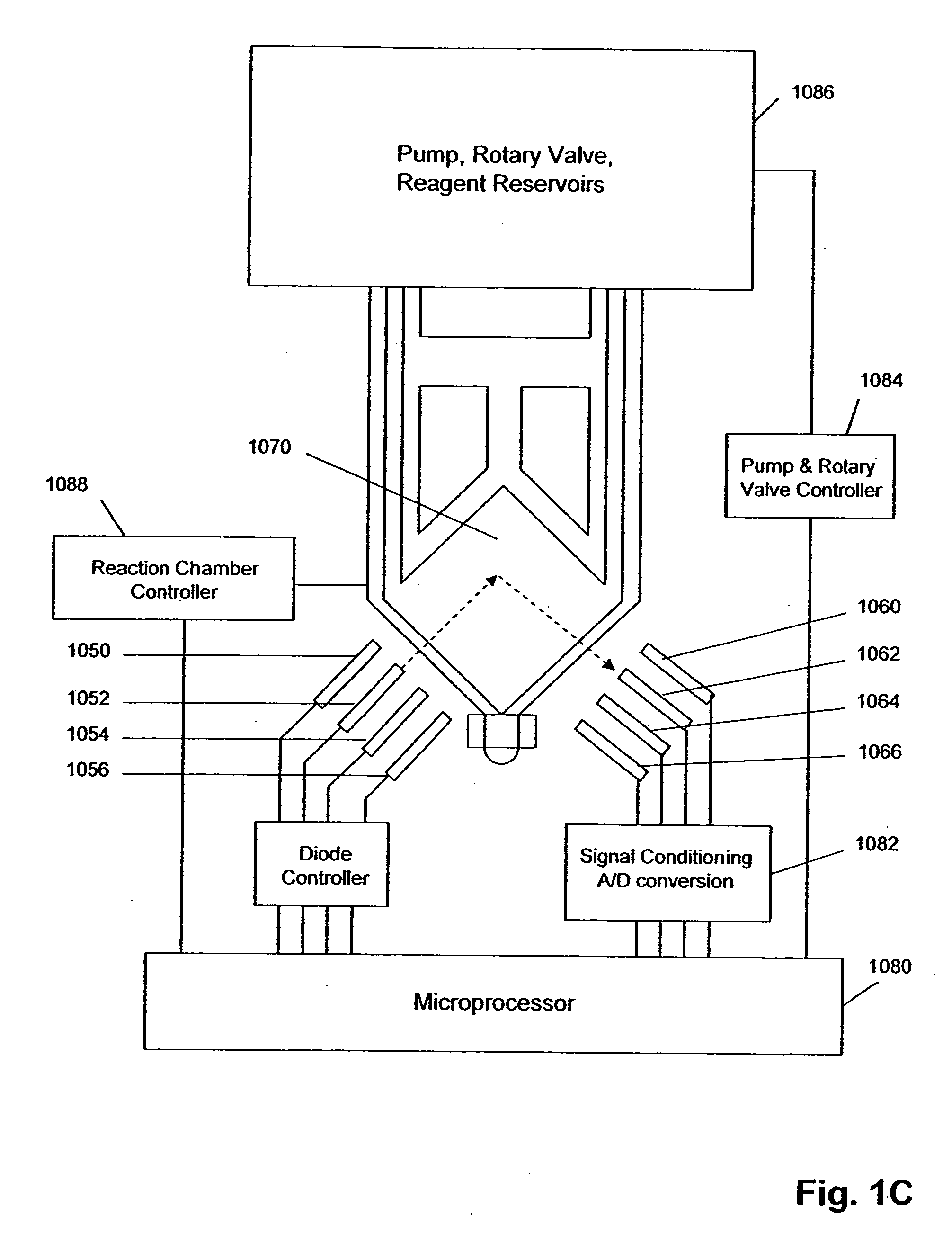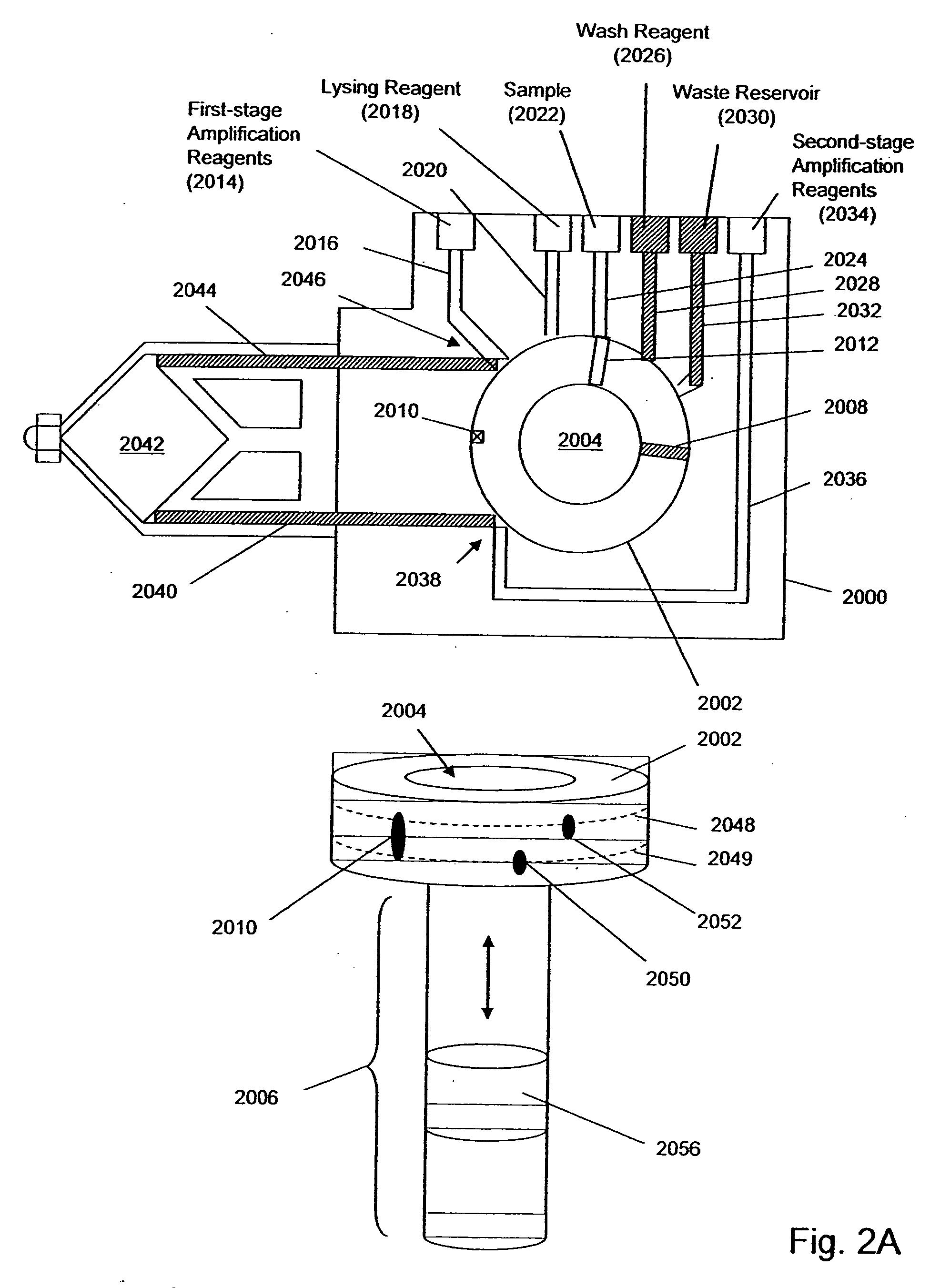Closed-system multi-stage nucleic acid amplification reactions
a nucleic acid amplification and closed-system technology, applied in biochemistry apparatus and processes, laboratories, instruments, etc., can solve the problems of false positives, increased reagent handling, and increased risk of introducing contaminating sequences, so as to facilitate reagent movement and prevent adsorption of sample components or reactants
- Summary
- Abstract
- Description
- Claims
- Application Information
AI Technical Summary
Benefits of technology
Problems solved by technology
Method used
Image
Examples
Embodiment Construction
[0045] The invention is directed to systems, methods, and apparatus for carrying out multi-stage amplification reactions, especially under fluidly closed conditions. In one aspect, methods of the invention are carried out in a fluidly closed reaction system that permits the isolation of a portion of a first (or prior) reaction mixture and its use as a sample or specimen in a second (or subsequent) reaction mixture, thereby substantially avoiding interfering effects that first reaction components may have in the second reaction if both reaction mixtures were simply combined together. In this aspect, systems, methods, and apparatus of the invention may be used with any amplification reaction that permits multiple stages of amplification based on the use of nested primers.
[0046] In particular, they are well-suited for carrying out two-stage, or nested, PCRs and NASBA reactions. By way of example, basic reaction conditions for nested PCRs and NASBA reactions are described below; howeve...
PUM
| Property | Measurement | Unit |
|---|---|---|
| Fraction | aaaaa | aaaaa |
| Fraction | aaaaa | aaaaa |
| Time | aaaaa | aaaaa |
Abstract
Description
Claims
Application Information
 Login to View More
Login to View More - R&D
- Intellectual Property
- Life Sciences
- Materials
- Tech Scout
- Unparalleled Data Quality
- Higher Quality Content
- 60% Fewer Hallucinations
Browse by: Latest US Patents, China's latest patents, Technical Efficacy Thesaurus, Application Domain, Technology Topic, Popular Technical Reports.
© 2025 PatSnap. All rights reserved.Legal|Privacy policy|Modern Slavery Act Transparency Statement|Sitemap|About US| Contact US: help@patsnap.com



